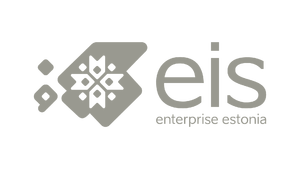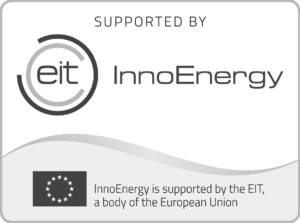29.08.2018
Estonian Genome Center: genetic data in the public’s interest
The Genome Center is currently hard at work on three major projects: gene donors who have donated so far are being given feedback, a separate eff ort has been launched with regard to patients with high hereditary risk, and by year’s end it is hoped to collect data from 100,000 new gene donors.
The Estonian state plans to accelerate the development of personalized medicine and use genetic information as a part of clinical medicine. The first gene donors in Estonia provided samples in 2002. In 2005, there were already more than 10,000 gene donors. By the end of 2011, yet another 40,000 donors had accrued. Five years ago, when Genome Centre director Andres Metspalu presented his vision of personalized medicine and talked about how genetic data could be used in people’s own interests, it still struck many as a futuristic idea.
Gene donors actually started getting feedback in 2015, in the context of pilot projects focused on familial hyper-cholesterolemia and the BRCA breast cancer gene mutation. “As a result of sequencing full genomes, it turned out that many people had an extremely high hereditary risk. As the Genome Center is a research institution, we cannot provide input for the making of medical decisions. We received permission from the ethics committee to call people in for a repeat study to replicate what we found. We saw that high risk had to be dealt with much earlier than envisioned by national screening programmes,“ says Genome Center head of communications Annely Allik.
The gene donors have had a very high interest in their genetic data, and in early 2017, it was decided to start a pilot project to provide them with feedback. “For four or five years, we engaged in research and pre-pared information that could be reported to people. Based on the Human Genes Rese-arch Act, gene donors have the right to genetic counselling upon accessing their data stored in the Gene Bank. This places limits on the provision of feedback. Long waiting lists have developed as the consultation is something that the Genome Centre’s specialists provide in addition to their main work. Still, we’re very glad that people are interested in genetic data,” says Allik.
The feedback report shows whether people’s personal disease risk is low, medium or high. “For example, with diabetes, we can give an indication of the genetic risk and determine the overall risk using a special algorithm, which also takes into account people’s health data such as body weight and waist girth. This gives some indication of how much of an impact their lifestyle has. For risk of heart attack, we show only genetic risk, as not all of the parameters are available – such as the latest total cholesterol values, which must be taken into account to evaluate the overall risk. We plan to add the Kardiokompass model known in Finland, which besides hereditary risk also factors in the specific person’s indicators and makes it possible to see how the risk changes, such as by quitting smoking,“ says Allik. Information is also available about pharmaco-genetics – optimizing the dose and finding the right active ingredient may be a long process, so the report provides a recommendation if any ingredient should be avoided or the dose decreased in a given group of medications.
“We have agreed that we will provide feedback only about conditions that can either be treated or prevented,” says project manager Helene Alavere. For example, this applies to conditions where health behaviour has a major role or some health indicator should be checked before the timeframe of the ordinary screening programme. One form of glaucoma – exfoliative glaucoma – has a high hereditary risk and thus people are recommended to have their intraocular pressure measured starting in their 20s. Usually people are recommended to do so at the age of 40 but this may be too late for people in the risk group. In this way, personal information allows greater intervention in one’s health. Complicated questions still arise and often ethical aspects must be considered. For example, what benefits would people get from talking about Alzheimer’s disease risk? Perhaps it would be useful to know about such a risk only at a future date, when the disease is curable.
Genetic information flowing into conventional medicine
To create the possibility of using genetic information as a part of clinical medicine, clinical personal medicine projects are under way for precise prevention of breast cancer and cardiovascular diseases (so-called RITA lead projects).
The project started in January 2018 and will run until December 2020. The consortium created in the project now includes close to one hundred specialists and doc-tors. “The objective of the RITA project is to study how genetic information can be used as part of a clinical service in the field of breast cancer and heart attack prevention. There are many algorithms and kinds of decision support that help assess the hereditary risk of breast cancer compared to the general population. People themselves are interested in these tools. Our goal is to examine how to find gene donors with a high risk, to get them to come in for a consultation with a doctor, train doctors to do this, carry out processes, and move data from one place to an-other. The goal: to attain a service model as to how to apply personal medicine in everyday clinical processes,” says project manager Krista Kruuv-Käo. “All steps must be tested to make it optimal to find people and get them to come in, but we must keep in mind protection of their privacy,” she adds. At least 1,000 patients will be chosen for both the breast cancer and heart attack prevention group. They will get feedback and advice and will be called in for an appointment with either an oncologist or GP.
“Doctors are already having trouble with the genetic tests offered on the market, which may not even be evidence based. We will be dealing with actual specific people who are given clinical information. We are engaged in thorough efforts to maximize the reliability of the information so that people can trust it and it will be beneficial,” says Kruuv-Käo, who adds that the gathering of data from 100,000 new gene donors in 2018 will allow even more precision when it comes to providing information and risk scores.
100,000 new donors
The idea to increase the number of gene donors is something that has been in the plans for the Genome Center founders since the beginning. In the Estonian centenary year, 100,000 people’s data will be gathered for the Genome Center. By the end of 2018, Estonia should have 152,000 gene donors. This large, ambitious project – even on the world scale – is being implemented cooperatively by the Ministry of Social Affairs, the National Institute for Health Development and the University of Tartu. All people living in Estonia starting from age 18 who have an Estonian personal identification code and have not yet joined the Genome Center can sign up. Besides collection of blood samples, the state has allocated money to prepare gene maps for 100,000 new gene donors. Previous donors had to wait years for this, unfortunately. The gene map is the first step prior to pre-paring reports for assessing personal disease risks and suitability of medications.
The project partners are the major hospitals – North Estonia Medical Centre, Tartu University Hospital, East Tallinn Central Hospital, West Tallinn Central Hospital and medical laboratory SYNLAB. The easiest way to give a gene sample is to provide 6 ml of venous blood in conjunction with other bloodwork ordered by a physician. If the person is not due to visit a specialist, blood can be given at SYNLAB locations across Estonia. For the latest information on ways to become a donor and give blood, visit geenidoonor.ee.












